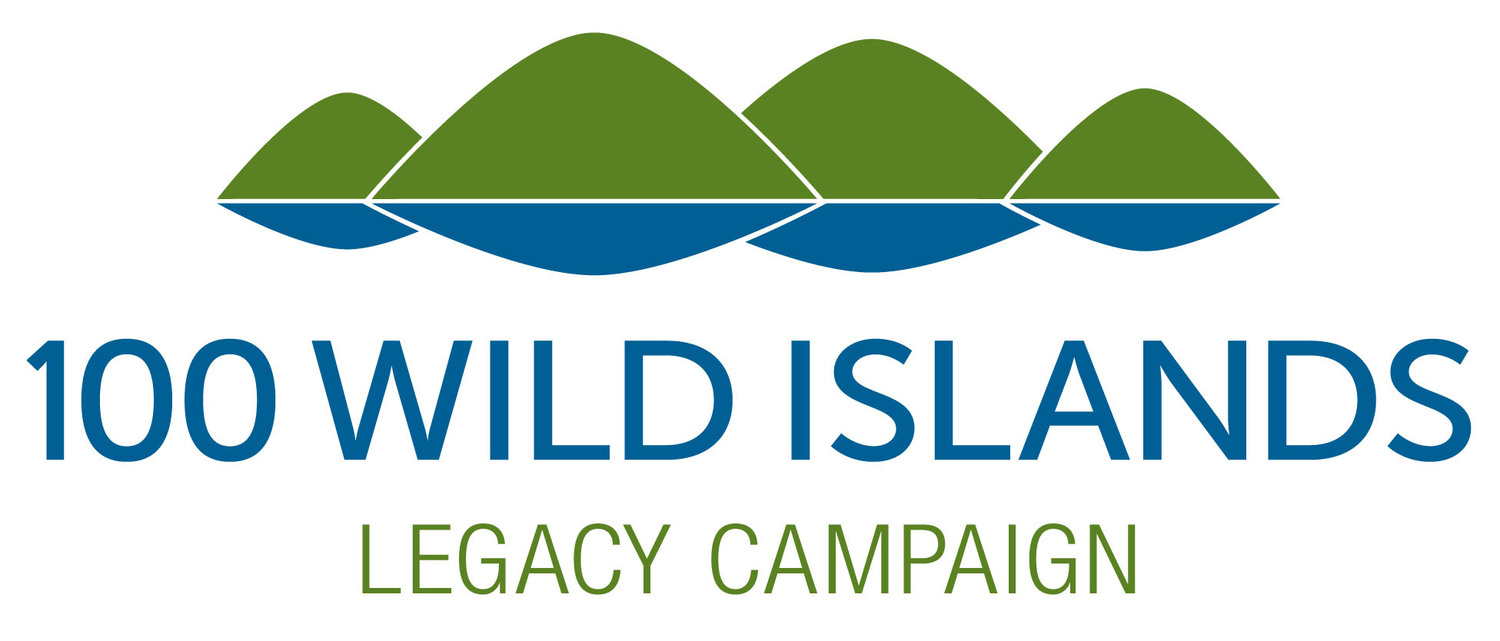Halifax, NS (June 18, 2015) -- The Nova Scotia Nature Trust’s ambitious campaign to protect the 100 Wild Islands on Nova Scotia’s Eastern Shore received a major conservation boost. All Crown islands within the archipelago were officially designated as Wilderness Area by the Province today. Together with the Nature Trust’s achievements in protecting private islands, 5,000 acres of ecologically rich and spectacular coastal island wilderness is now protected, forever.
The 100 Wild Islands area, just outside of Halifax, is considered one of Nova Scotia’s least-known, yet greatest, natural treasures. A vast, wild archipelago of beautiful, unspoiled coastal islands, it is home to pristine beaches and idyllic clear blue lagoons, dramatic headlands and cliffs, and ecologically rich wetlands, nestled between Clam Harbour Beach and Taylor Head. The undeveloped islands stretch 30 kilometers along the coast and actually encompass 282 islands. The area is a wilderness paradise for intrepid paddlers and sailors and treasured by the local community.
Twice before, the archipelago’s significance has been recognized, with attempts to protect the islands as a national park in the 1960s and later a provincial park. But neither effort succeeded, largely because a key ingredient was missing: a solution for effectively protecting the islands in private ownership, and positively engaging the local community. For the next 40 years, efforts to protect the islands were largely forgotten.
But recently, the stars aligned. With its unique community-based, land trust approach, the Nature Trust offered a new possibility, a viable way to protect the entire island wilderness - Crown and private lands together. The Nature Trust proposed a bold, new multi-partner conservation vision for the islands, the 100 Wild Islands Legacy Campaign. While the Eastern Shore islands were not initially included in the Province’s new Parks and Protected Areas Plan, the Nature Trust’s vision was compelling. Inclusion of the islands in the Plan was enthusiastically supported by the community during subsequent consultations. Tonight, at the Nature Trust’s Conservation Showcase in Halifax, Environment Minister Randy Delorey shared the exciting news of Wilderness Area designation for the islands.
“I am pleased to announce that the Province has legally protected the Crown islands of the Eastern Shore stretching from Clam Bay to Liscomb Point,” said Environment Minister Randy Delorey. “This conservation legacy, combined with provincial parks along this coastline, complements the efforts of the Nova Scotia Nature Trust to acquire and protect the private lands on this magnificent shore through the 100 Wild Islands Campaign. I congratulate all of the donors, partners and staff who made this possible, and look forward to working with the Nature Trust and other partners on managing these lands in the future.”
The Nature Trust commended the Province for its environmental leadership. “We congratulate the Province on designating this and 22 other new protected areas for Nova Scotia, an important conservation achievement and irreplaceable gift to all Nova Scotians,” noted Bonnie Sutherland, Executive Director of the Nova Scotia Nature Trust. She added, “Protection of the provincially-owned Eastern Shore islands is particularly exciting for us, bringing our 100 Wild Islands campaign a significant step closer to completion.”
The Nature Trust has already protected many highly significant properties in the area, including Borgles Island, the spectacular keystone property, as well as Shelter Cove, Ship Rock Islands, Stoney, Tuff, Middle and Outer islands and a large portion of Gerard Island. Community outreach and engagement efforts have earned enthusiastic support for the initiative from local residents and island owners, the scientific and research community, sailors, paddlers and now the Provincial government. According to the Nature Trust there is more island conservation news on the horizon, but much work remains to be done. Island protection almost three quarters complete, leaving almost 2,000 acres still to be protected, encompassing 23 different parcels of land.
To make this islands legacy possible, the Nature Trust launched a $7 million fundraising campaign. According the Ms. Sutherland, “Nova Scotian entrepreneur Paul Gauthier was instrumental in bringing the 100 islands campaign into being. He inspired us to take on this incredibly bold and ambitious conservation campaign, and made a transformative $3.5 million investment that made this ambitious fundraising campaign possible.”
The Nature Trust seized an irreplaceable opportunity to protect what may be one of the last ecologically rich, undisturbed and vast island wilderness archipelagos left in North America. They have just $800,000 left to raise, which will be matched dollar for dollar by Mr. Gauthier.
Paul Gauthier is thrilled to see the 100 Wild Islands campaign reach this important milestone. “The designation of these crown-owned islands is a huge step forward for this joint effort to conserve the 100 Wild Islands. The provincial government has demonstrated that, like me, they understand that this is a once-in-a-lifetime opportunity not to be missed,” he said.
“The 100 Wild Islands is a globally significant natural treasure, right here in our own backyard. How many opportunities do we have to be a part of creating such an incredible legacy? I hope that everyone inspired by the 100 Wild Islands will join me in ensuring that the Nature Trust is successful in protecting these islands, for our children and for all Nova Scotians.”
Help Protect the 100 Wild Islands
Charitable donations can be made at www.100wildislands.ca/donate
or by calling the Nature Trust (902) 425-LAND.
Explore the 100 Wild Islands
- The Nature Trust is hosting a hike and paddle exploring the 100 wild islands on June 21st, and a boat tour on July 19th.
- Photos, videos and more about the 100 wild islands, the Nature Trust and guided excursions to the islands can be found at www.nsnt.ca
Photos: Dean Casavechia





